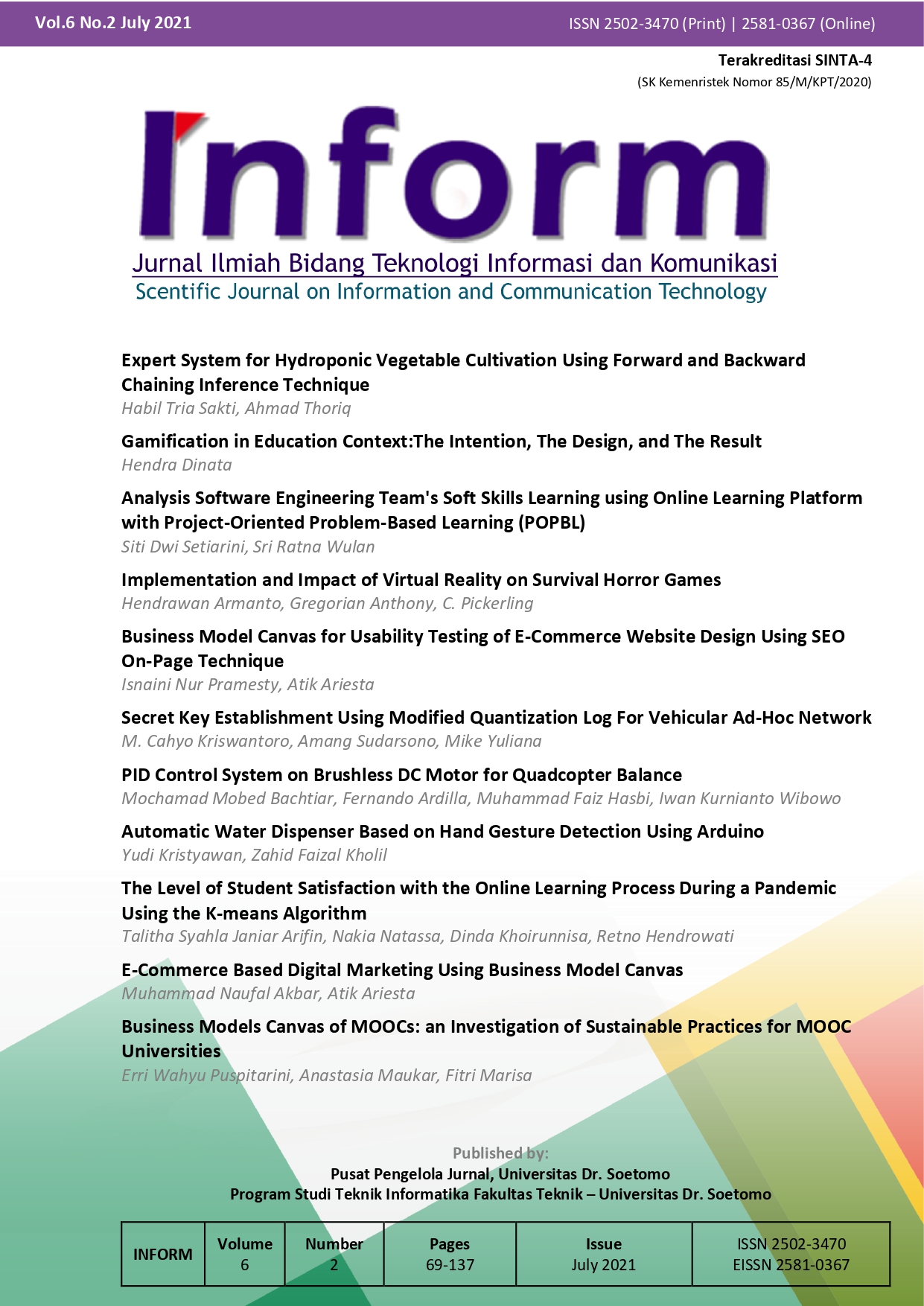PID Control System on Brushless DC Motor for Quadcopter Balance
 Abstract views: 875
,
Abstract views: 875
,
 PDF downloads: 1041
PDF downloads: 1041
Abstract
Unmanned Aerial Vehicle (UAV) is an unmanned aircraft system that is no longer a special need but has become a general need for the community, and one example is used to capture everyday moments through photos or videos from the air. Among the models of UAV aircraft is the quadcopter, where there is a flight controller that functions to fly the quadcopter by adjusting the speed of each motor. The flight controller that is often used today is the Pixhawk manufacturer. The Pixhawk module is an integrated system that the factory has provided, so it cannot be modified in terms of control and I/O. This research focuses on making an independent flight controller that can be used to fly a quadcopter. The control method that is implanted is Proportional Integral Derivative or commonly known as PID. The flight controller uses the PID control method to adjust each Brushless DC Motor (BLDC) speed to maintain stability while flying. From the test results, the quadcopter can fly stably with KP parameters of 2.5, KI of 0.6, and KD of 1.0. The response time in processing feedback is 3s.
References
Sumantri Bambang. “Robust and Energy-Efficient Controller Design for a Quad-Rotor Helicopterâ€. Doctor of Engineering Thesis. Robotics and Mechatronics Laboratory Department of Mechanical Engineering Toyohashi University of Technology. Japan. 2015.
Sungbok Kim.“Multirotor Configurations of an Unmanned Mini Aircraftâ€. IEEE 15th International Conference on Networking, Sensing and Control (ICNSC). China. 2018.
“Buku Panduan KRTI Kontes Robot Terbang Indonesia- Menuju Kemandirian Teknologi Wahana Terbang Tanpa Awakâ€, Pusat Prestasi Nasional, Kementerian Pendidikan dan Kebudayaan, 2020.
B. Sumantri, N. Tamami, Y. B. Nuraga and B. Kurniawan, "Development of a Low-Cost Embedded Flight Controller for Quadcopter," 2020 International Electronics Symposium (IES), 2020, pp. 233-238, doi: 10.1109/IES50839.2020.9231564.
Araki, Mituhiko. “PID Control†Control system, robotics and automation. 2002.
Atmel, AVR221: Discrete PID controller, 2006.
A. R. Dooraki and D. -J. Lee, "Reinforcement learning based flight controller capable of controlling a quadcopter with four, three and two working motors," 2020 20th International Conference on Control, Automation and Systems (ICCAS), 2020, pp. 161-166, doi: 10.23919/ICCAS50221.2020.9268270.
S. Bari, S. S. Zehra Hamdani, H. U. Khan, M. u. Rehman and H. Khan, "Artificial Neural Network Based Self-Tuned PID Controller for Flight Control of Quadcopter," 2019 International Conference on Engineering and Emerging Technologies (ICEET), 2019, pp. 1-5, doi: 10.1109/CEET1.2019.8711864.
S. Sakulthong, S. Tantrairatn and W. Saengphet, "Frequency Response System Identification and Flight Controller Tuning for Quadcopter UAV," 2018 Third International Conference on Engineering Science and Innovative Technology (ESIT
Copyright (c) 2021 Mochamad Mobed Bachtiar

This work is licensed under a Creative Commons Attribution-ShareAlike 4.0 International License.
Authors who publish with Inform: Jurnal Ilmiah Bidang Teknologi Informasi dan Komunikasi agree to the following terms:
-
Authors retain copyright and grant the journal right of first publication with the work simultaneously licensed under a Creative Commons Attribution License (CC BY-SA 4.0) that allows others to share the work with an acknowledgment of the work's authorship and initial publication in this journal.
-
Authors are able to enter into separate, additional contractual arrangements for the non-exclusive distribution of the journal's published version of the work (e.g., post it to an institutional repository or publish it in a book), with an acknowledgment of its initial publication in this journal.
-
Authors are permitted and encouraged to post their work online (e.g., in institutional repositories or on their website) prior to and during the submission process, as it can lead to productive exchanges, as well as earlier and greater citation of published work.













